You hear it again and again from amateur operators who have spent a lifetime trying to work the world: “All I need is Pratas Island!” “If San Felix would ever be on the air again, I could rest in peace.” “Will I ever get another chance to make contact with Scarborough Reef?” “North Korea? Well, that’s not going to happen anytime soon.”
DXers know there are good reasons why these locations and other top ten Most Wanted DXCC Entities (per Clublog April 2025) rarely become active. Environmental and wildlife restrictions, political and military barriers, logistical nightmares, and financial roadblocks provide hurdles that make some wonder if a clean sweep of all DXCC entities is even possible anymore.
But there is hope. In December 2022, Crozet Island (FT5/W) was activated by Thierry Mazel, F6CUK. The single-operator, DX Engineering-sponsored FT8WW DXpedition resulted in more than 50,000 QSOs, knocking Crozet from the third most-wanted entity to #29.
Just outside of the top ten, Saint Edward and Marion Islands (#11) is currently active thanks to the ZS8W DXpedition by Yuris, YL2GM from Marion Island (IOTA AF-021). He is scheduled to operate from the South African National Antarctic Program station on Marion until May 16 on 160-6M in CW, SSB, and Digital.
Further, there is hope that the Rig in a Box (RIB) concept, which reduces the chance of environmental impact by placing self-contained stations on land and operating from a boat nearby, will increase the chances of receiving permission to operate from heavily restricted locations. Several rare locations, including Jarvis Island, have already been put on the air thanks to RIB setups.
With this in mind, OnAllBands reached out to the accomplished DX chasers at DX Engineering for their QSL cards from the rarest of the rare. In this first part of our series, we’ll be looking at the top three: North Korea, Scarborough Reef, and San Felix Islands.
1. North Korea (P5)
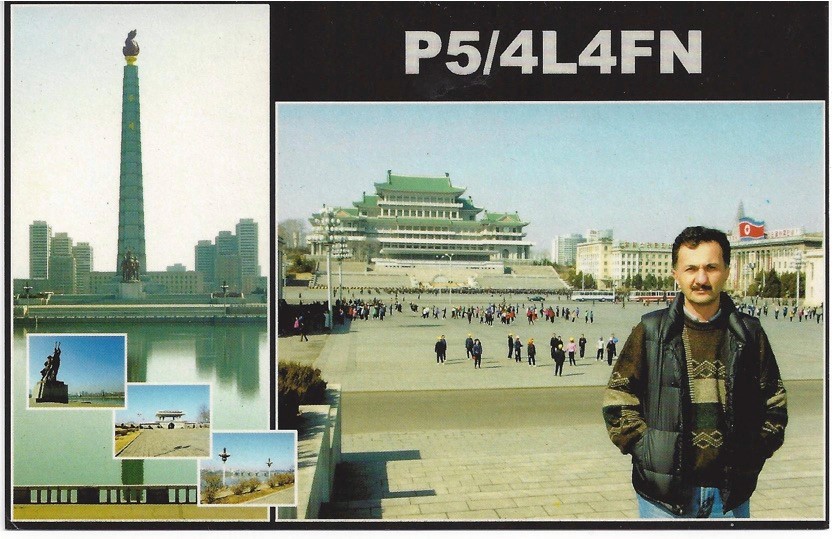
It almost seems unfathomable that 24 years ago, Ed Giorgadze, 4L4FN, a citizen of the Republic of Georgia employed by the United Nations World Food Program, operated his Icom IC-706MkIIG in North Korea from November 2001 to November 2002.
During a year of operation from the socialist state’s capital, Pyongyang, Giorgadze made 16,000 contacts on RTTY and SSB. One of those QSOs was logged by George, K3GP, DX Engineering customer/technical support specialist, who reached the east Asian country on 15M RTTY.
“It was sheer luck that I was able to make this contact on a Sunday in June 2002,” George recalled. “RTTY is my favorite mode, and I was tuning the band when I came across his signal. As I recall I was able to work him on the second or third call.”
In December 2015, Dom Grzyb, 3Z9DX, logged several hundred stations (600 in Asia, 26 in North America) as part of an approved 20/15/10M demonstration operation from P5. However, a more extensive activation of North Korea planned for summer 2016 by 3Z9DX did not happen.
2. Scarborough Reef (BS7H)
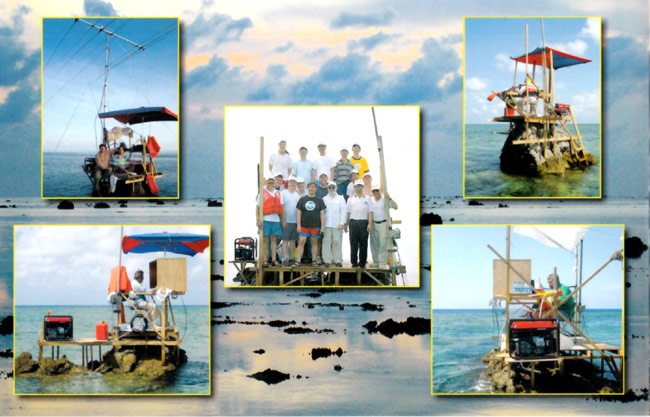
One look at the photos on the April/May 2007 BS7H Scarborough Reef QSL card will tell you why this entity is rarely activated. Operating on four wooden structures to prevent being overtaken at high tide, the intrepid 16-operator BS7H crew logged more than 45,800 QSOs over six days from Scarborough Reef—what one blogger called “a bunch of rocks in the South China Sea.” An article by Paul Pescitelli, K4UJ, and Tom Harrell, N4XP, described the good, the bad, and the ugly of the adventure this way: “…chased by a Chinese fishing vessel, seasickness in the night, dynamite blasts, long days in the sun, followed by great camaraderie.” Read the full story here.
Will Scarborough be on the air again in the near future? Odds are against it. In addition to the dangers of the activation, political entanglements in the region among China, Taiwan, and the Philippines, all of whom lay claim to the shoal, add another obstacle to putting this second most-wanted entity on the air. Recent activity between China and the Philippines in this disputed area have highlighted tensions in the region.
QSL Card
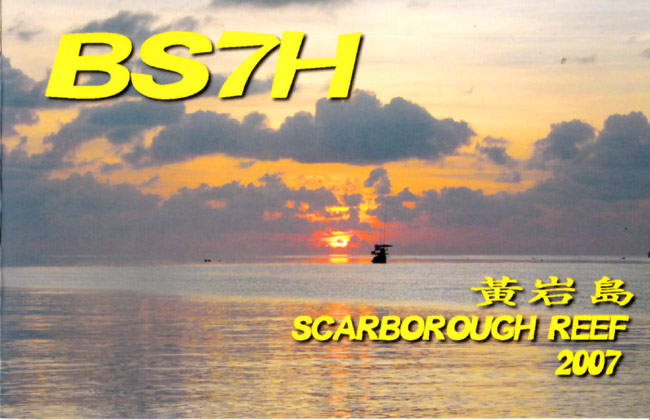
Dave, N8NB, DX Engineering technical support specialist, was fortunate to make contact with the BS7H DXpedition—the last time Scarborough Reef was on the air. There were planned activations for 2016 and early 2024 that never came to fruition.
“That part of Asia is usually one that is difficult to contact under good conditions,” Dave said. “This resulted in the biggest pileups of countless hams around the world transmitting at the same time. Luckily, they heard my call-out. Confirming this contact made it possible for me to get on the ARRL DXCC Honor Roll.”
Watch this fascinating video of the last Scarborough Reef activation:
3. San Felix Islands (CE0X)
The Desventuradas (“Unfortunate” in Spanish) archipelago 530 miles off the coast of Chile is made up of four small islands, including San Felix and San Ambrosio. There is a detachment of the Chilean Navy on San Felix and an airport but no civilian settlements in the Desventuradas. The last activation of the San Felix Islands was the 12-operator XR0X DXpedition in March 2002, which recorded more than 68,000 QSOs over 11 days.
From the XR0X website, “Lying in the Pacific northwest of Valpariso, San Felix is a barren rocky island about 2 km across, with two small islets nearby. Access to the site is restricted due to the presence of a military garrison there. Little is known of the natural history of the island or of its possible prehistoric importance. The major goal of this expedition was to provide radio contact with this remote and seldom-activated island. A secondary goal was to document indigenous species, especially terrestrial plants and marine invertebrates.”
There have been a handful of other activations since it became a DXCC entity in 1965. There was a false report of a San Felix DXpedition in 2016. In 2021, DX World reported this grim news about the possibilities of activating what today stands as the third most-wanted location:
“There is no hope for a CE0X operation at this time, either from San Felix or San Ambrosio due to restrictions from the military.”
QSL Cards
Wayne K8FF, DX Engineering customer/technical support specialist, reached CE0XA in April 1965 on CW—the first time the San Felix Islands were activated. The CW-only operating team consisted of Ed Cushing, W4QVJ (SK); Dale Strieter, W4DQS (SK); Jake Schott, W8FGX (SK); Gene Liggett, W8ZCT (SK); and Mac Reynolds, W9EVI (SK). Read more about the activation in this vintage issue of the “Florida Skip.” The San Felix Islands wouldn’t be activated again until March 1971.
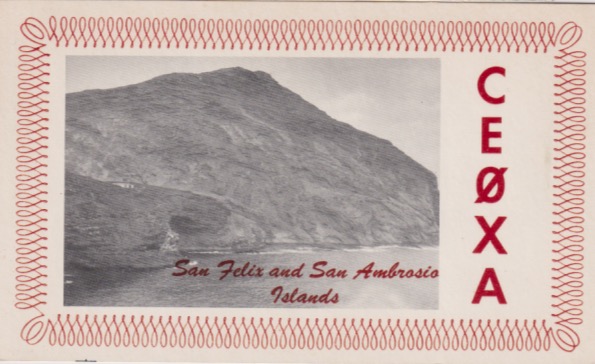
Scott Jones, N3RA, DX Engineering sales manager, contacted the XQ0X DXpedition from San Ambrosio on 10M SSB. He was using his old call sign, WB3KKX. John Torres, CE0ZAM, operated from the 0.93-square-mile island from December 1990 to July 1991. We think the magnificent QSL card below captures the true spirit of amateur radio adventuring like no other.
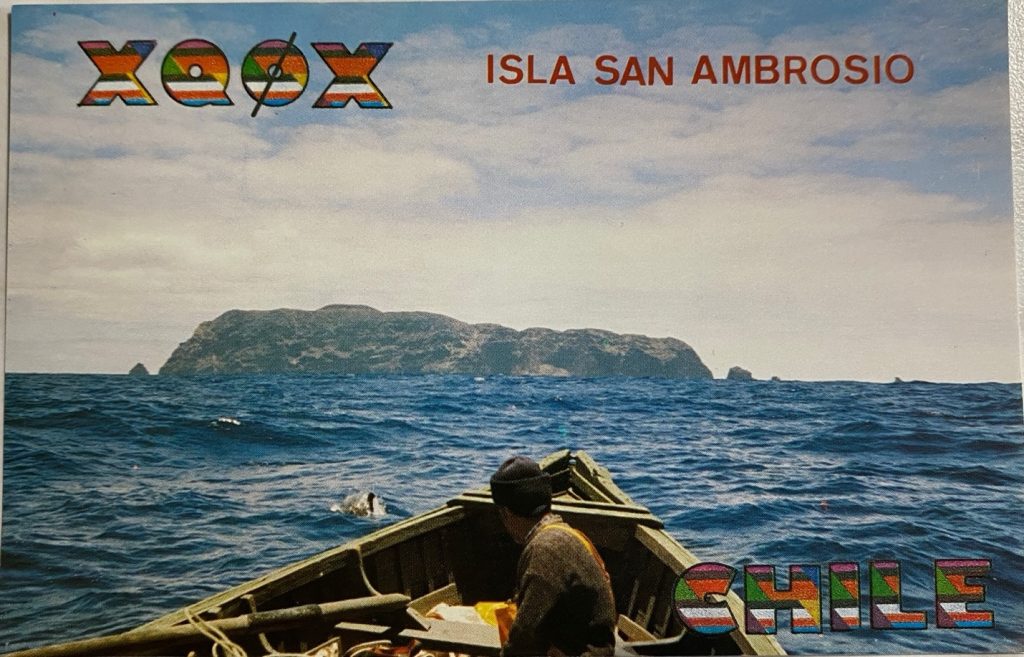
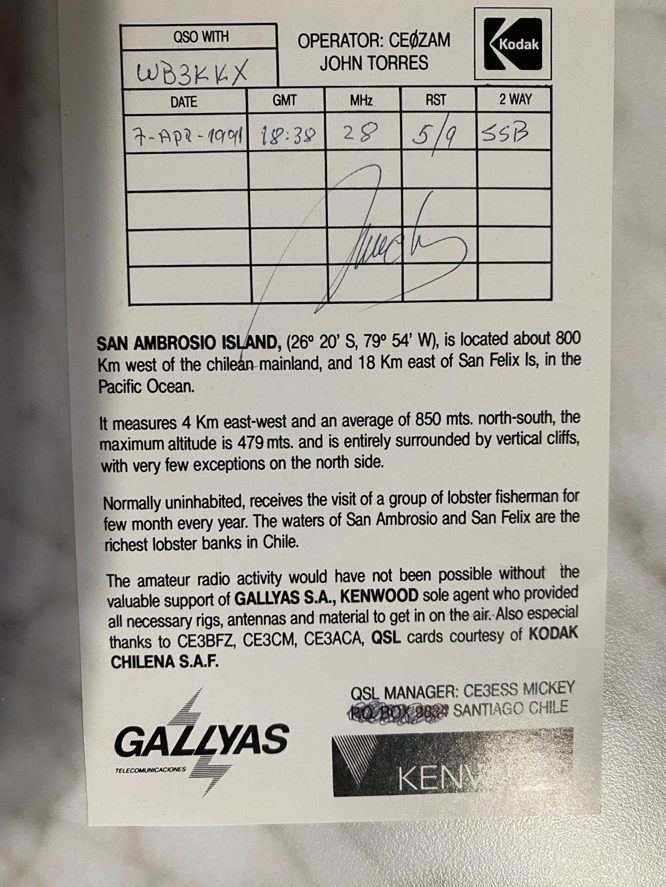
Scotty, KG9Z, DX Engineering customer/technical support specialist, reached the 1984 CE0AA DXpedition from San Felix Island organized by the Radio Club of Chile. It marked the first activation of San Felix since October 1973.
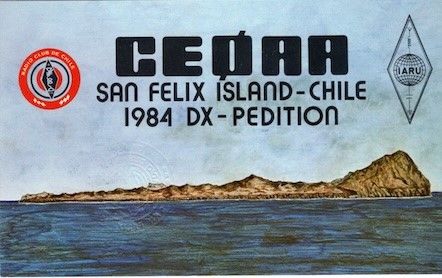
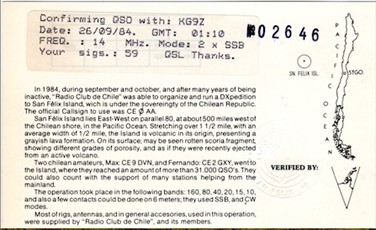
Stay tuned for Part 2 of our Top Ten series, featuring QSL cards from Pratas Island, Kure Island, Johnston Island, and Peter 1 Island.
Whether you’re trying to reach Marion Island or your best friend Marion who lives across town, go to DXEngineering.com for everything you need to upgrade your station, including transceivers, amplifiers, antennas, towers, microphones, headsets, CW keys and paddles, and more.
***
Editor’s Note: Every month, DX Engineering features QSL cards from our team members’ personal collections. To highlight upcoming DXpeditions, we’ll be displaying a few of our favorite cards along with details about what it took to make these contacts. We’re excited to share some of the special cards pulled from the thousands we’ve received over the years. We look forward to seeing your cards as well!

